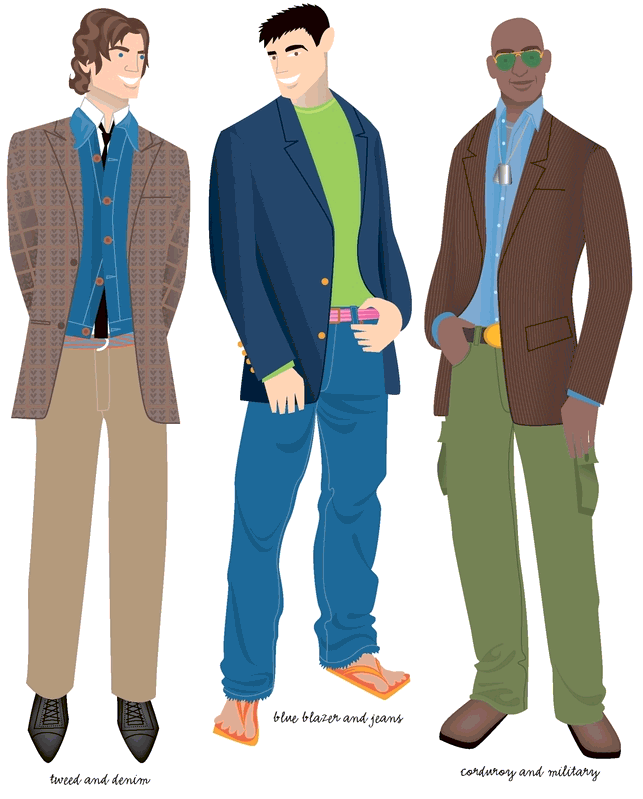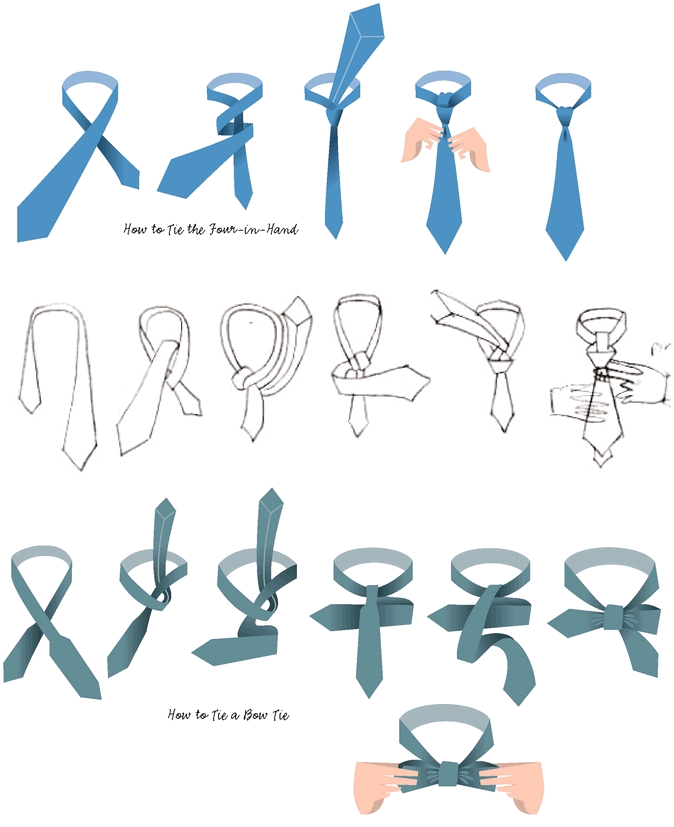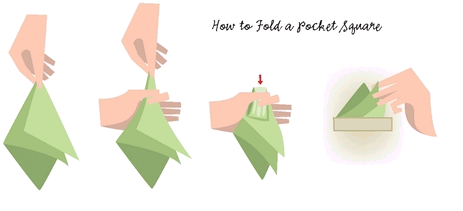Authors: Carson Kressley
Off the Cuff (12 page)
Â
Â
Now that we've got your suit jacket under control, next come the pants. To cuff or not to cuff, that is the question. Cuffs really don't serve a purpose anymore. Once upon a time, when you were traipsing around on muddy streets in the London or New York of olden days, you would just roll your pants up a little bit to protect them. When more people began wearing suits as the business uniform, this impromptu cuff was incorporated as a standard feature of the suit. In today's modern world of clean sidewalks and efficient municipal waste systems, those cuffs are obsolete, unless you live in Walnut Grove. In which case I suggest you head over to Doc Baker's and get some of that new drug everyone's talking about. I think they call it “aspirin”??
Â
Cuffs are strictly a matter of personal taste. For a traditional American- or English-cut suit, I like them. They look finished. They belong there. They're a matter of tradition, particularly a one-and-a-quarter- or one-and-a-half-inch cuff. Suit pants can be a longer than dress pants, with more of a break. This means that more fabric can be pooling when you're standing upright. The goal is to avoid showing a lot of ankle of calf when you're seated in a suit. The less leg showing, the more elegant, and a suit is obviously more elegant than dress pants.
Â
If the pants have pleatsâand yes, for some very traditional suits I can still endorse a pleatâthey should definitely have cuffs as well. But for cleaner, more modern suits, especially Italian suits, I like a flat-front pant. And if pants have a flat-front, they shouldn't have cuffs. It just looks more clean and sophisticated. Cuffed flat-front pants look a little too Mickey Rooneyâor like you should be out selling newspapers with Oliver Twist.
BLAZERS OR SPORT COATSIf you're not a suit wearer, but you have the occasion to get dressed up now and again for a dinner date or a party, you should have a couple of good blazers in your wardrobe.
Â
Blazers are super, super versatile. You can wear a blazer with anything. Wear it with jeans. Dress it up with tweed pants. Wear it with a dress shirt. Wear it with culottes. Wear it with a micromini. Wear it with lederhosen! Okay, maybe not those last few.
Â
For your first blazer, I recommend a navy blue, lightweight wool for all seasonsâeven summer. Nothing looks cooler or more classically chic than a blue blazer, a pink oxford and a pair of khakis. You can dress it up with a fun pocket square if you don't want to wear a tie.
Â
Just like a good suit, a classic blue blazer is an investment. You're going to have it forever. You can buy a proper blue blazer when you're twenty and have it through your Viagra years. Ah, Viagra. Ain't life grand?

Â
A blue blazer can have plain horn buttons or traditional brass ones, either plain or with a monogram. Plain horn buttons are more versatile, but I love the tradition and the heritage of the brass. If you're buying good quality, the buttons should be subtle, not super shiny and garish.
Â
Try to think outside the box with your blue blazer. It's very European to wear a sport coat with all sorts of things, for all seasons, all times of day, and all occasions. Think about all the many ways you can dress it up: with a sweater, with a tie, with a dress shirt. Or dress it down with jeans or cargo pants. You can do so many things with it. It slices, it dices, it cubes, it juliennes your favorite vegetablesâjust like the Ginsu!
Â
For fall and winter, you should have a tweed blazer. This one will be rugged but warm and is always stylish. And don't think that you can only pair a tweed blazer with an oxford shirt and a pipe. Try wearing it in an updated way, with a skinny cashmere sweater underneath or a rock-and-roll T-shirt. Wear it with jeansâit looks great.
Â
If you want to be nutty, you can invest in a corduroy blazer as well. I have a certain fetish for elbow patches that stems from having seen Ryan O'Neal in
Love Story
a few too many times. But that's another book ... in which I play the role of Ali MacGraw. Sigh.
Love Story
a few too many times. But that's another book ... in which I play the role of Ali MacGraw. Sigh.
Â
ONE CARDINAL RULE :
You don't want to wear pants and a sport coat that try to make it look like you're wearing a suit. You're not fooling anyone. Don't match your slacks to your blazer; you'll look like you work at Subway. Avoid quirky colors. It's not the place to get quirky. (Century 21 agents exempted.) Oh, and do me a favor and make sure your blazers fit, okay? They shouldn't be like sacks (the bags, not the store).
TIES AND POCKET SQUARESYou don't want to wear pants and a sport coat that try to make it look like you're wearing a suit. You're not fooling anyone. Don't match your slacks to your blazer; you'll look like you work at Subway. Avoid quirky colors. It's not the place to get quirky. (Century 21 agents exempted.) Oh, and do me a favor and make sure your blazers fit, okay? They shouldn't be like sacks (the bags, not the store).
There is nothing that can kill a great outfit, even if it's a stunning handmade suit, like a bad tie. A lot of guys see ties as an afterthought, but ties are so important. If you are going to wear one, especially in this day and age when nobody's wearing themâit better be sensational.
Â
You really need to take care with your ties and make sure that they're good-looking and smart, but ties can also be fun. They can give a hint of your personality, or make a gentle nod to something that you enjoy, like sailboats or vintage cars. Just don't take that too far. You don't want to get a tie that has toy trucks all over it, or Christmas trees that light up.

My Life in Ties
In 1991, right after college graduation, I got my first job and moved to New York. And my very first winter in the big city, I sold neckwear at Saks Fifth Avenue over the holidays.
Â
Neckwear is the total bottom rung for men's clothing. It's the one place where all people who don't know what they want come to buy a gift. They say, “I just don't know. I'll get him a tie!” It's so lame. But I'm sure I touched many lives. I can just see them even now, in some tony apartment on the Upper East Side, opening that gift box to find hot pink whales on a green cotton background. And some guy in a tweed blazer would say, “Thanks for the tie, Joan. Where'd you find this one?” And she would answer, “This cute little blond guy picked it out for me at Saks!” I really got a sense of satisfaction from helping people find themselves through clothes. That has always been my thing, and I really believe that much of it started right there, in the neckwear department of Saks. Now I'm a little verklempt, are you? It was a happy, magical time.
People ask how to find a good tie, but it's kind of like when you see a puppy at the animal shelter: when it's the right one, you'll know it. One very simple thing to keep in mind is that ties should always be made of silk. There's one slight exception: very, very English ties for fall are sometimes made of wool challis. They're very sophisticated, but they're not easy to find and you might not even come across them. I also love knit ties, very Alex P. Keaton, but very chic when done tone-on-tone with a sophisticated suit. But they're not for everybody.
Â
A good practice when tie shopping is to give the tie a good feel. A good tie will have an inner construction that is actually tangible. If you took it apart, there would be something like a piece of mesh or screen that gives it some body and structure. A bad tie is wimpy and soft. If you make a quick knot, you'll see it won't hold a dimple, which should warn you that your dimple is going to flatten out when you wear it. Major chubby killer!
Â
With so many tie variations out there, it would be impossible to make any lists of ties you must own or tell you how to pick patterns. Just remember that ties are, once again, a great place to keep it simple. The classic rep tie, which often has a regimental stripe, can be very bright and preppy or quite subdued and elegant. You can never go wrong with a repp tie. Practically as effective as an Ivy League education for a mere fraction of the cost!
Â
And finally, a lot of guys don't realize that certain ties relate to certain seasons. Muted rusts, gold, rich reds, and wool ties lend themselves much more to fall and winter. A lime green-and-navy rep tie paired with a pink oxford would be much more appropriate for spring and summer.
What Color Is Your Pocket Square?Forget your parachute. The burning question these days is “What color is your pocket square?” Pocket squares really just add that extra little tszuj to an outfit, especially if you're wearing a blazer and you're not wearing a tie. You can look nekkid without it.
REMEMBER :
You always want to look distinguished and ahead of the pack. As far as I'm concerned, you might as well not even wear pants if you're not wearing a pocket square.
REMEMBER :
You always want to look distinguished and ahead of the pack. As far as I'm concerned, you might as well not even wear pants if you're not wearing a pocket square.
Â
Pocket squares should be made of silkâor cotton for summerâbut silk is always best. Cotton may look a little too dicey. And for heaven's sake, do not blow your nose in them. It's not a hankie or a snot rag, people. Please, do yourself a favor and grab a Puffs instead.
Â
As easy way to pick a pocket square is to remember it should pull out one color of an item you're wearingâa stripe or pattern. If you're wearing a blue blazer and a pale blue-and-white striped shirt, for instance, maybe your pocket square would be pale blue.

When it comes to folding the pocket square, I like them to be natural looking. I don't like when it's all neatly folded. It's not origami. Those three pointy triangles you sometimes see poking out of a local news anchor's jacket? Way too fussy, in my opinion. Notice that he's also wearing a pinky ring and a gold rope chain bracelet Capice?
Â
You just want to lay your pocket square flat on a table. Pinch right in the middle between your thumb and forefinger and let it hang naturallyâit will sort of look like a little ghost. Make a circle with the thumb and forefinger of your other hand, and draw the “ghost” through. Flip it over, fold it in half and stick it in the pocket. You should have a little bit of the rounded front part and a little bit of the tail sticking out. It's an art form, so practice makes perfect.
THE FINISHED SUIT LOOK: PULLING IT ALL TOGETHEROooh, that sounds naughty, doesn't it? That's bringing back Boy Scout jamboree memories, people. In tents. I mean intense.
Â
Anyway, I know you're confused. You've got a great classic suit. You have great shirts. You have some good ties and pocket squares. Now what? Three little words, peanut! Color, pattern, and scale. You can harmonize everything through just those three things. It's just like making a martini. All it takes is finesse, practice, and good credit.
Your Friend, The Tailor
Your neighborhood tailor should become one of your best friends. The tailor is an important professional, just like your doctor, but the licensing requirements are not quite as stringent. Anyone can hang up a shingle and call him or herself a tailor. You have to find the good ones by word of mouth. So if you move to a new area, you need to ask friends, get recommendations, or you need to go and test tailors out by having a shirt altered or pants cuffed. Don't take your new expensive suit to a brand-new tailor. If you're buying a suit, and the store doesn't do its own tailoring, ask the salesperson who they recommend. Generally this is a great way to find a reliable tailor.
Other books
With the Father by Jenni Moen
Winter Queen by Amber Argyle
Schizo by Nic Sheff
Heartless (Keeping Secrets) by Roman, J.
Wicked Games by Sean Olin
Day One: A Novel by Nate Kenyon
Poppy's War by Lily Baxter
Last Team Standing by Matthew Algeo
Hard Landing by Leather, Stephen
Dark (Beautiful Ashes #1) by Lora Ann
